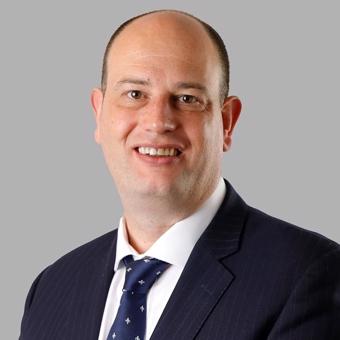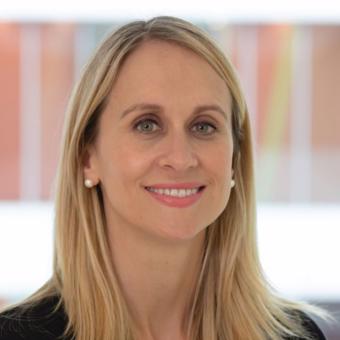Lewis Silkin's new planning partner, Sara Hanrahan, tells The Brief about the firm’s long-term strategy, the changing face of planning and her route into the law.
As its new planning partner, Sara Hanrahan is tasked with helping Lewis Silkin’s real estate team achieve the top-tier ranking already enjoyed by the firm’s IT, IP, legal tech and immigration practices. She told The Brief about the firm’s long-term strategy, the changing face of planning and her route into the law.
Sara Hanrahan joined the real estate team at top 100 firm Lewis Silkin as planning partner in January 2020 as a lateral hire from Blake Morgan, where she had spent seven years as head of planning. She was, she says, particularly attracted by Lewis Silkin’s strategic vision for its future as a firm.
“It’s investing in its future and I felt that was something I wanted to be part of when I was looking forward into my own future,” she explains.
Hanrahan lives in rural Bedfordshire and has two children aged nine and 12. When The Brief spoke to her in early March she was also, for obvious work-life balance reasons, enthusiastic about her new employer’s commitment to agile working.
Agile working is, she says, as much about efficient use of office space as benefiting home-workers. Nonetheless, one imagines the firm is now somewhat relieved to have invested in remote working practices and infrastructure long before the term “Covid-19” existed.
People are becoming more environmentally conscious and they want to live in buildings that are greener. If you build some sort of monstrosity you can’t simply pay a huge lump sum to compensate for its horrendous carbon footprint. People still might not want to live in it because it’s really ungreen.
A heritage of planning
The real estate team at Lewis Silkin numbers 27 in total, including eight partners. Her appointment was, she says, part of a strategy to move the firm into the top tier for real estate.
“What is quite interesting is that in 1945 Lewis Silkin, who set the firm up, became the first ever Minister of Planning in Clement Atlee’s Government. He oversaw development of the UK’s first planning policy and legislation, so the history of the firm has roots going back to the beginning of the planning story.
“At the moment Lewis Silkin is, as a firm, in the number one tier for quite a few specialist areas like IT, intellectual property, legal tech, employment and immigration. My appointment was part of a five-year strategy to reposition the real estate team so that it can also become a number one player.”
This five-year plan commenced in 2018 when the firm hired development lawyer Anthony van Hoffen from Eversheds, appointing him as a partner. One of van Hoffen’s biggest clients is the London Legacy Development Corporation, which is tasked with regenerating the former Olympic Park in East London.
The right fit
Hanrahan’s appointment, meanwhile, was a year in the making following the retirement of Lewis Silkin’s previous planning partner. She explains, “They didn’t just want a lateral hire, they wanted the right person so they put a lot of effort into trying to find someone who they felt would be able to fit with the team, bring clients that would gel with the firm and who would then be able to work with the others in the department to help expand.
“I’ve got experience of that because I built the planning teams at Blake Morgan and, before that, at Winckworth Sherwood.”
At the moment, she continues, she is the team’s only dedicated planning lawyer. She says, “It’s best first of all to bed in, to get my clients to bed in, and to work to understand the existing client base, and then to decide who we want to target strategically as potential new clients. I think you need to do all that first rather than immediately having a team that you need to feed work down to as well.”
The current strategy for the Lewis Silkin real estate team is to focus on four key areas: development, luxury retail, high net worth individuals and commercial occupiers. “I have had experience in all four of those areas,” Hanrahan continues.
What is quite interesting is that in 1945 Lewis Silkin, who set the firm up, became the first ever Minister of Planning in Clement Atlee’s Government. He oversaw development of the UK’s first planning policy and legislation, so the history of the firm has roots going back to the beginning of the planning story.
Developments in development
Notable projects on which she has been involved in the past include More London (the development around City Hall), Dalston Square in Hackney, the Nine Elms Opportunity Area around the US embassy and Battersea Power Station, and the regeneration of New Bermondsey in the vicinity of The Den, Millwall’s football ground. She has also worked with Swansea City Council on one of its regeneration schemes.
Another, contrasting, specialist area is advising high net worth individuals on planning issues, particularly in relation to listed property in London. “If they’ve got a property in, say, Mayfair and they’re wanting to expand upwards or downwards I help them strategically with the planning issues involved.”
Looking at the market more broadly, Hanrahan believes developments in policy and society are having a major impact on new developments. To secure vital Section 106 agreements with the relevant local planning authorities developers now, she says, must do much more than just pay lip service to mitigating the perceived harm caused be their schemes.
This could, she explains, now include building roads, new schools and affordable housing. Environmental considerations are also now paramount for securing planning permission.
However, legislation is not the only factor at play here. “People are becoming more environmentally conscious and they want to live in buildings that are greener,” she says.
“If you build some sort of monstrosity you can’t simply pay a huge lump sum to compensate for its horrendous carbon footprint. People still might not want to live in it because it’s really ungreen.”
Vocational guidance
Hanrahan, now a leading light in her field, did not actually began her working life as a lawyer. Having studied English at St Anne’s College, Oxford, she wanted to do “something creative” and initially took a role in marketing.
She did not, though, find marketing to be particularly creative or stimulating, and instead took a year off to consider her options and, at 26, joined Herbert Smith (now Herbert Smith Freehills) where she trained as a lawyer. She does not, however, regret her earlier career choice, believing it made her “a more rounded lawyer”, and urges young people considering joining the profession also to gain some experience of the world beyond the law.
Having never consciously considered a career in law until her mid-20s, a recent discovery made when clearing out her attic gave Hanrahan something of a surprise. “It was a piece of paper from one of those ancient computers that you inputted various things into and it told you your ideal career.
“It dated back to when I was 16 and I have absolutely no memory of it but it had me down as a lawyer. I think it was right.”












